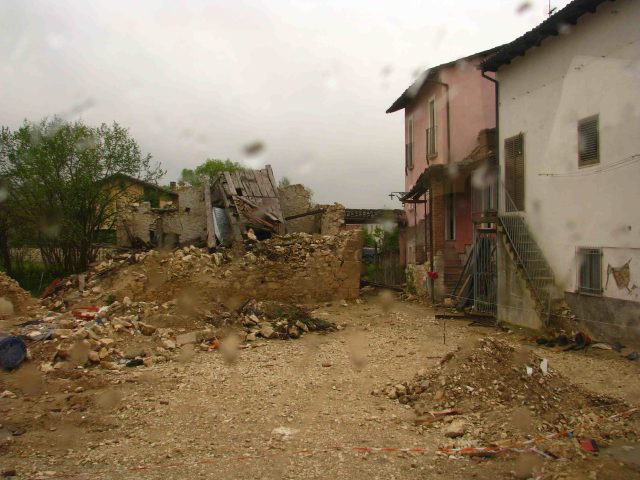
A group of six seismologists were convicted of manslaughter by an Italian court today for their role in the preparation of a risk report on seismic activity in L'Aquila, Italy. The report, which was generally regarded as reassuring, was released about a week before an earthquake struck the town, killing over 300 people. Initial reports indicate that the scientists have been sentenced to six years in prison.
The town of L'Aquila sits on a major fault line, and had been struck by several swarms of small magnitude earthquakes. The Italian government had organized a risk-assessment committee, which included seismologists (including the former head of the National Institute of Geophysics) and government officials. In the week before the earthquake struck, the group told the public that the high incidence of smaller earthquakes were not necessarily precursors of a larger quake. They did, however, also mention that earthquakes were unpredictable, and that building codes in the area needed to be adjusted to provide better seismic safety.
Reportedly, one of the Italian government officials took matters a step further, declaring that there was no danger, and suggesting that the smaller earthquakes had relieved stress on the fault.
A week later, L'Aquila was struck by a 6.3 magnitude quake, which devastated the area's older buildings. Reportedly, a number of the people who were killed in the event had stayed indoors because they believed that the quake did not pose a threat. The relatives of the deceased have helped drive the prosecution, and several were present in the court during the trial.
Although the trial has been portrayed as prosecuting scientists for failing to do the impossible—namely, predict an earthquake—the reality is somewhat more complicated. The scientists, in this case, were asked to produce a formal evaluation of risk in response to a specific series of quakes. Their analysis arguably reflected a reasonable interpretation of events, although some have suggested that it did not reflect the most current information we have about the role of small quakes in building larger strain on faults.
Any assessment of risk, however, assumed an oversized importance, given the environment in which it was released. Not only was there a panicked public, but an amateur seismologist was reportedly predicting large quakes in the area at regular intervals. And, in this case, the scientists' evaluation was presented to the public by a government official with no expertise in seismology (he was also convicted in the same verdict). And it's clear that, even if their report had understated any well established risks, they would never have been prosecuted had the quake not killed anyone, a result that was probably the product of centuries-old buildings as much as anything else.
The prosecution had attracted widespread condemnation from the scientific community, with one petition on behalf of the seismologists attracting over 5,000 signatures. But, shockingly, the judge in the case took only a few hours to deliver the verdict, and handed down sentences that were two years longer than those requested by the prosecutor. Appeals will undoubtedly be forthcoming.
reader comments
167